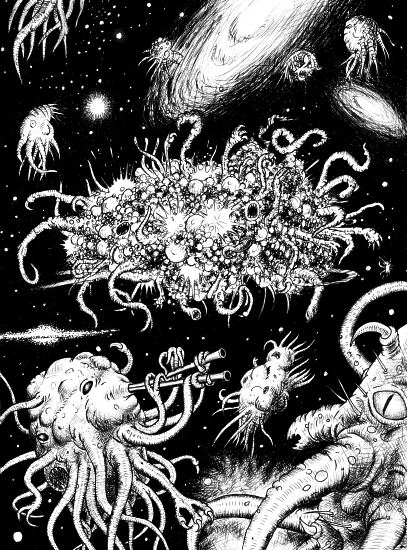As above, so below...
The universe is holographic, but not completely. Certain of its parts are, or can become, reflective of the universe as a whole. They can come to contain, in some sense, all the exhaustive and infinite forms which could pour from the kingdom beyond possibility. Being and beings alike, as well as what belongs to neither, in their most total and true abstraction – all these things are the implicit truth of certain subsystems approaching the cosmos in its totality. Let this be our axiom: a microcosm, a part which is nonetheless in truth the whole, is possible.
The macrocosm is the very definition of the singular, a uniquely existing in-and-for-itself which tolerates no relation. Each element within the macrocosm is related to other elements, yes, but there is no relation between any element and the whole as such. The general idea of a whole-part relation may be coherent, but the same cannot be said for a totality-part relation, and the macrocosm is just such a totality. Therefore must we singularize, leaving ourselves behind.
We as animals, as bodies, are ever in the thick of the world, quite literally defined and, what's more, brought into being by our relations with the elements of this world. But we have no relation with this world as a whole.
However, the macrocosm is not altogether inaccessible to us.
Paradoxically, one must take leave of relation to become like the macrocosm, to become “related” to it. The macrocosm has no relations, and therefore must man become non-relational in its abstract image.
Can two singularities, then, be related to one another? No, but there may come to exist a formal similarity, a metaphysical parallelism, between certain of these singularities. We might say, fancifully, that singularities may have the same shape.
But how does one take leave of relation? Many methods present themselves historically: meditation, ritual, the intake of drugs, experience of overwhelming and strange emotions, the assumption of certain yogic postures. But here we are focused not on the occult tradition (at least explicitly), but on the most singular of art forms: music.
Music has a high density of singularities, in fact the highest of all the arts. It has no object, and it has by far the most variations of that fact. Visual art can escape representation, but these pieces, compared to the awesome profusion of musical styles, express on the whole a dull monotony. Music abounds in the abstract, in form. It is the formless en-formed.
Music takes leave of relation. And it allows the listener to do the same, since thinking is in each case being, and vice versa. But not just any music will do, nor any subjective orientation.
It is the aim of this series to assist listeners in making themselves into microcosms. Music is presented along with some linguistic indication of the corresponding abstract image. Rather than empirical or argumentative, this series will be an exercise in a rather fanciful and speculative aesthetics.



